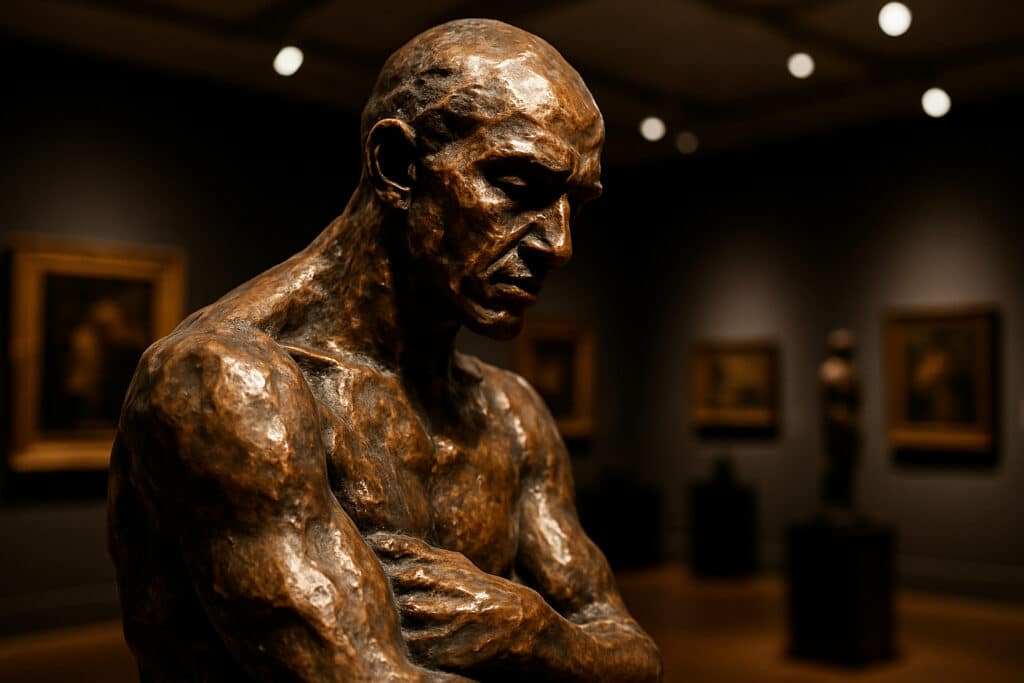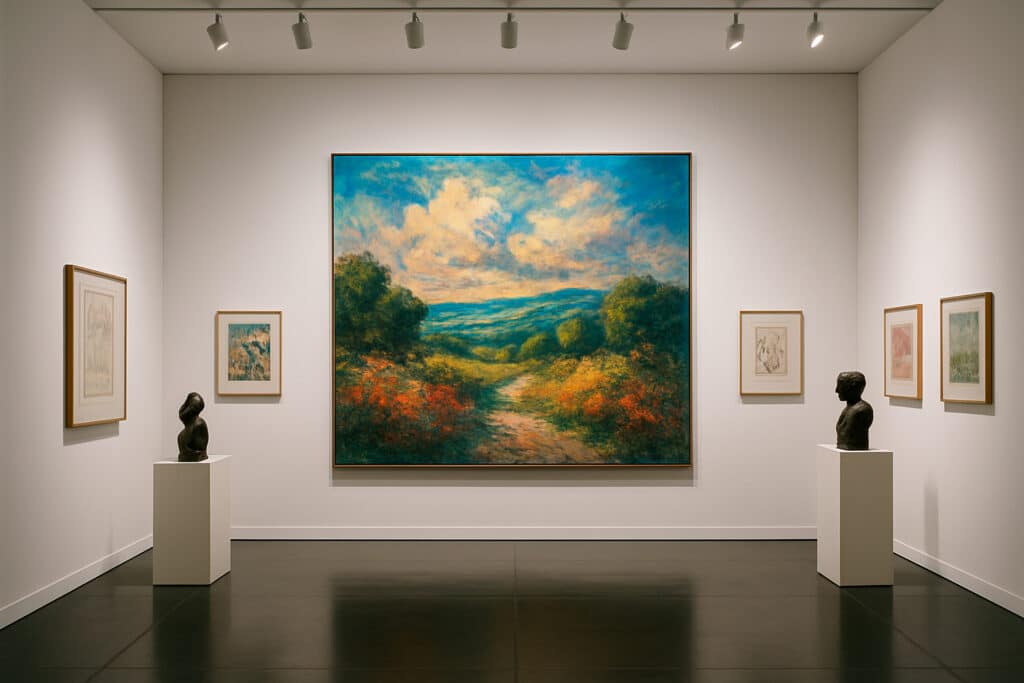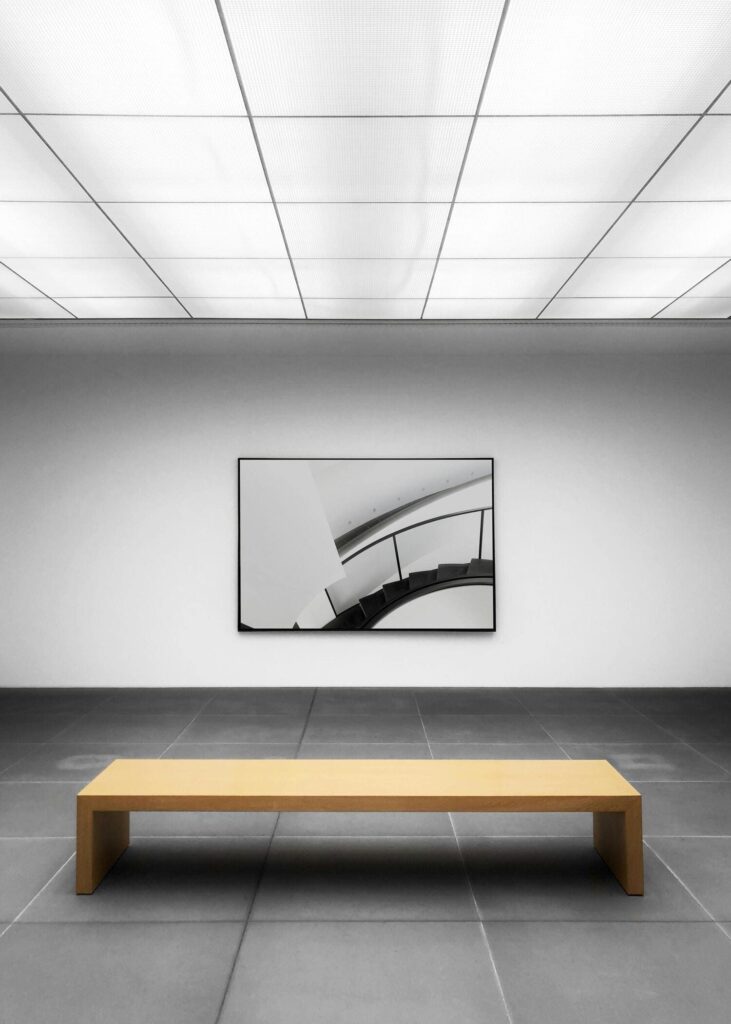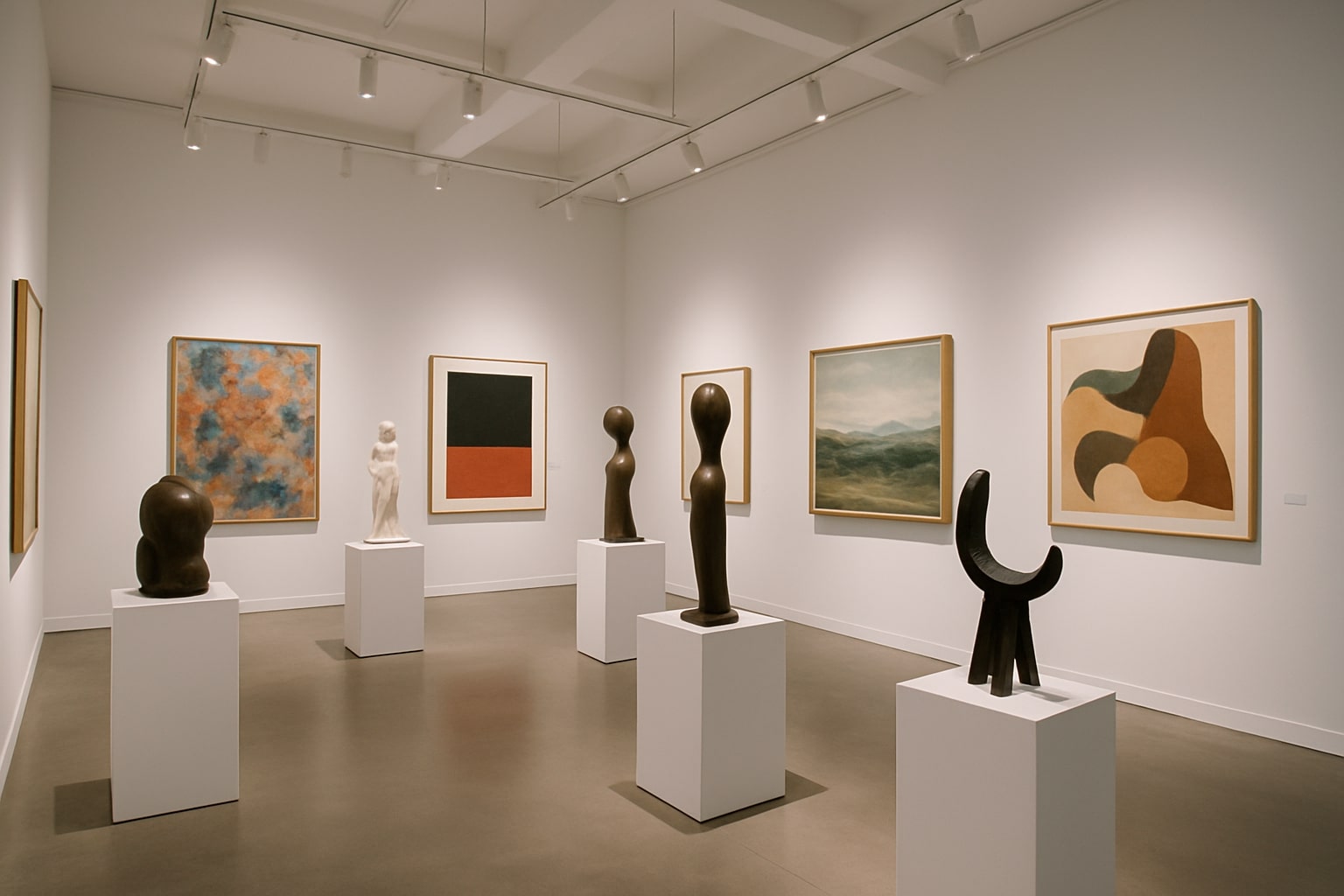Contemporary art galleries are essential spaces within the art market. Their function goes far beyond exhibiting works: they connect contemporary artists with the public, collectors and professionals in the sector. If you are wondering what an art gallery is, how it works and why it is so important for today’s sculptors, this article will answer your questions. We explore their role, their functions, the types of exhibitions they offer and their impact on contemporary artistic production.
What is an art gallery and how does it work?
An art gallery is a physical or virtual space for the exhibition of contemporary works of art. It also plays a key role in the cultural sphere and the art market, connecting creators with collectors and art professionals. In this sense, it acts as a mediator between art and society, encouraging aesthetic appreciation, critical thinking and the acquisition of unique pieces.
We will go into depth in the next point but we can summarize the functions of an art gallery in the organization of art exhibitions; the representation and promotion of artists; the participation in fairs, both national and international; or the direct sale of high quality works.
They mainly operate under the models of commission for the sale of sculptures and works, and long-term artistic representation, where the gallery promotes the artist’s career.
Nowadays, art galleries have become a cultural space of reference within the current art scene.
Main functions of an art gallery
Exhibition of works and sculptures
Galleries not only display art but create experiences that elevate each work. In the case of sculpture galleries, each exhibition is designed to stand out in an emotional way, allowing the visitor to connect with the piece. For the artist, it is the opportunity to present their work in an environment that values detail, context and professionalism, opening the door to future collaborations, sales and recognition.

Sale of sculptures and other works
More than just a showcase, the gallery acts as a direct bridge to real buyers. Thanks to its network of contacts and industry reputation, it facilitates the sale of contemporary sculptures to collectors, companies and institutions that value authentic art. For the sculptor, this means not only visibility but also a great possibility of turning his work into a stable source of income, as well as a guaranteed position in the art market.
Artistic representation and marketing
Behind every artist with projection, there is a solid strategy. The gallery assumes the role of strategic ally of the artist, taking charge of defining competitive prices, creating a positioning plan and taking the work to the place where it should be, that is, in fairs, events and social networks where the art market moves. Its work not only boosts the artist’s visibility, but also provides opportunities that would not arise independently.
Art galleries for sculptors: promotion and visibility
Professional support to the sculptor
Working with a gallery goes beyond having a space to exhibit. It is having a team that accompanies you every step of the way, advises you on how to present your work, how to value it and how to stand out in a competitive market. Their role is key especially in the promotion of emerging sculptors and in the consolidation of artistic trajectories, generating a professional environment where your work does not go unnoticed.
Opportunities in fairs and exhibitions
A good gallery opens doors that would otherwise remain closed. Thanks to its network of contacts, you can access solo exhibitions, group shows and international fairs where the direction of contemporary art is defined. This is where opportunities are forged, where lasting relationships are created and where your work is positioned before the public and the professionals that really matter.
Connection with collectors
Exhibiting in a gallery is to target a select and qualified audience such as collectors and art lovers looking for authentic pieces. This professional environment facilitates sales and the building of long-term relationships with those who value art and are committed to investing in it. For the sculptor, it is an effective opportunity to sell sculptures with greater fluidity, support and credibility.
Types of exhibitions in art galleries
Individual exhibitions of sculptors
A solo exhibition is more than an exhibition: it is an artistic statement, and allows the sculptor to show his evolution, his technique and his artistic proposal in a complete way. It is usually accompanied by a catalog or curatorial text, and offers the artist the opportunity to consolidate his proposal in front of critics.
Group art exhibitions
Collective art exhibitions are the ideal scenario for emerging artists. Under a common theme, they bring together different works that dialogue with each other, generating connections between creators and broadening the scope of each piece. Participating in a group exhibition is an excellent way to gain visibility and enter new artistic circuits.

Temporary and permanent exhibitions
Many galleries offer temporary exhibitions that change every season, constantly renewing their proposal and attracting new audiences. Others maintain a permanent collection or collection of works, which allows for a direct and continuous sale of sculptures over time.
Cultural importance of art galleries
Bringing art to the general public
Galleries are living spaces where art is no longer exclusive. Unlike museums, access is usually free, allowing anyone to enjoy contemporary art and connect with the work.

They invigorate the local art scene
These spaces function not only as exhibition venues, but could also be considered active cultural centers, organizing events, guided tours, talks and meetings that enrich the local artistic environment and create a community around culture and creation.
Boost the career of the represented artist
In addition to showing your work, galleries boost you as a professional, it is a platform that gives structure, visibility, accompaniment and connects you with the real market. As an artist, being part of a gallery can be a before and after in your consolidated artistic career.
Art galleries in Spain and around the world are much more than spaces in which to hang works, they are strategic allies for contemporary sculptors. Their ability to disseminate, promote and sell works makes these spaces fundamental pillars of artistic and cultural development.
If you are a sculptor and want to advance your career, whether you are looking for a gallery for emerging artists or discovering how to exhibit in an art gallery, at Capa Esculturas we work with you to make your talent visible in the spaces that matter.

